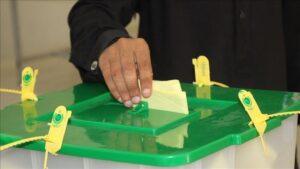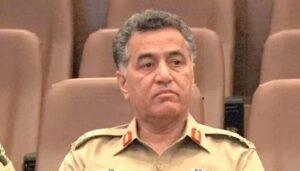Posted on July 13, 2025
Mardan:
At the top of the hills in the Sawaldher village of the District of Mardan, Khyber Pakhtunkhwa (KP) are the remains proven in the 2000 Buddhist archaeological site, 2000, 2000, 2000, 2000, 2000, of the old civilization of Gandhara. He once served as an educational institution and a spiritual complex of Buddhism for about 550 years during the Kushan dynasty. While it is rich in cultural history and importance, Thareli today remains outside the public conscience and the attention of the government. With narrow access roads, minimal facilities and limited promotion, the potential of the site as a religious tourist destination remains without exploiting, despite its position as the third largest Buddhist site in the Mardan district.
Located about nineteen kilometers from the city of Mardan in a hill of approximately 300 meters high, the site has kept stupas and chapels where Buddha sculptures were placed to worship, as well as a residential area at high altitude in the mountain.
“After the Buddhist remains of Takht Bhai and Jamal Gahri, Thareli is the third largest historical site in the Mardan district,” shares Dr. Ghayur Shahab, a member of the Faculty of the Archeology Department of the University of Malakand and the Mardán Museum. “It was built during the Kushan period, from the 1st century to. Until the 5th century C. After its construction, the site remained active for 550 years. The decrease in Buddhism began when the State stopped supporting it. With the arrival of the Huns and then the Muslims, Buddhism came to an end in this region.”
According to the Directorate of Archeology and Museums, KP, the complex was first discovered in the eighteenth century and after 1964 to 1967, a Japanese archaeological mission began excavations of the site and discovered the main stupa next to a spring, surrounded by several votive stupas, students of students, monks cells, assembly rooms and chapels.
Built with diaper masonry, the main stupa presented niches that housed Buddhist sculptures. The site spread over multiple spurs in terraces with evidence of multistorous structures.
“This site was a religious seminar where Buddhism was taught and practiced,” shares Dr. Shahab. “Excavated antiques on the site include Buddhist panels that reveal the life stories of Buddha, sculptures, stucco sculptures and coins. These are 1752385854 exhibited in Peshawar and Lahore museums. “
Junaid Khan, a local resident of the area, said that, like other historical sites in KP, the Thalli Buddhist complex is adequate and relevant to religious tourism.
“However, unfortunately only the tourists of the nearby villages visit the site,” he adds. “The Provincial Government of Pakistan Tehreek Insaf (PTI) has so far managed to fulfill its promises regarding the promotion of religious tourism in religion. An important obstacle in the promotion of the historical complex of thousands of years is the path that leads to the archaeological site, which is narrow and disagree. In addition to the construction of an adequate road and the social roads, it is the road that the government is focused on the first ribe of the main route.
According to Khan, initially, the site was under the jurisdiction of the federal government. In 2010, the Provincial Directorate of Archeology was delivered, and in 2013, the KP government protected it under the Antiques Law and carried out some conservation and restoration works.
“In 2023, the Superior Court of Peshawar, in a verdict, prohibited the crushing, mining and explosion plants within a kilometer of the site,” the authorities of the direction revealed.
“For the promotion of religious tourism, we need to attract foreigners from Buddhist countries to visit these sites,” shares Bakhat Muhammad, Deputy Director of Archeology and Museums, KP.
He added that the Thareli archaeological complex is important for religious tourism, but due to security concerns, the Local Police does not allow foreigners to visit this monastic complex and the Jamal Garhi site. As a result, they only visit the Takht Bhai monastic complex that has a negative impact on tourism.
“The site extends more than 253 kanales in a mountainous area,” shares the deputy director. “Currently, no entry fee is collected and the site is not officially open to visitors.”
Regarding additional excavation and development, Bakhat Muhammad said that a two -year project for eight historical sites was approved, including the Thareli complex, adding that, by virtue of the project, excavation, conservation and development will be carried out before the site is opened for local and foreign visitors with the appropriate facilities.
The growing chapels of Thareli, the stupas of centuries of antiquity and the scattered sculptures represent more than only historical artifacts: they are fragments of a pluralistic and intellectual past that once defined the region. However, despite its deep archaeological and spiritual meaning, the site resides in negligence, eclipsed by more accessible or popular monuments such as Takht Bhai. With renewed efforts in excavation, conservation and infrastructure, Thareli could arise not only as a key node on the path of Gandharan’s inheritance, but also as a source of cultural diplomacy and economic opportunities through religious tourism. However, for that to happen, preservation must comply with the promotion, and history must receive a second life.
Razzaq is a radio and printed journalist with headquarters in Peshawar. He tweet @theabdurazzaq
All facts and information are the exclusive responsibility of the writer




